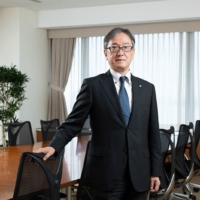With "The Unfinished Century," its first exhibition since its renovation, the Museum of Modern Art, Tokyo, offers a comprehensive selection of works spanning the entire 20th century. The museum, and not only its exhibits, has become more comprehensive, too -- its improved facilities including a digital library, greatly enlarged storage space and a well-stocked shop. Clearly, MOMAT is getting serious about its responsibilities to display, explain and promote that most chameleonlike of beasts, Japanese modern art.
Despite a selection that covers all bases, including nihonga (Japanese art that eschews Western influences), this still manages to be a daring exhibition, lining up Japanese art alongside its Western influences and challenging the viewer to make comparisons. This becomes clear in the pairing of Toki Okamoto's "Work" (1924) with "The Parting of Hector and Andromaque" (1918) by Giorgio de Chirico. Though executed in a more naive style, the painting by the young Japanese artist pointedly features many of the same dreamlike elements as the great Italian surrealist's work, including de Chirico's trademark faceless mannequin.
Similarly, Tetsugoro Yorozu's large, red, imposing "Leaning Woman" (1917) is set near daintier but more skillful examples of Cubism by Pablo Picasso and Juan Gris. The systemic abstraction and minimalism of Tadaaki Kuwayama's three bands of color in "Brown, White and Blue" (1968) look less imaginative next to precursors such as Frank Stella's enigmatic "Marquis de Portago" (1960).


















With your current subscription plan you can comment on stories. However, before writing your first comment, please create a display name in the Profile section of your subscriber account page.